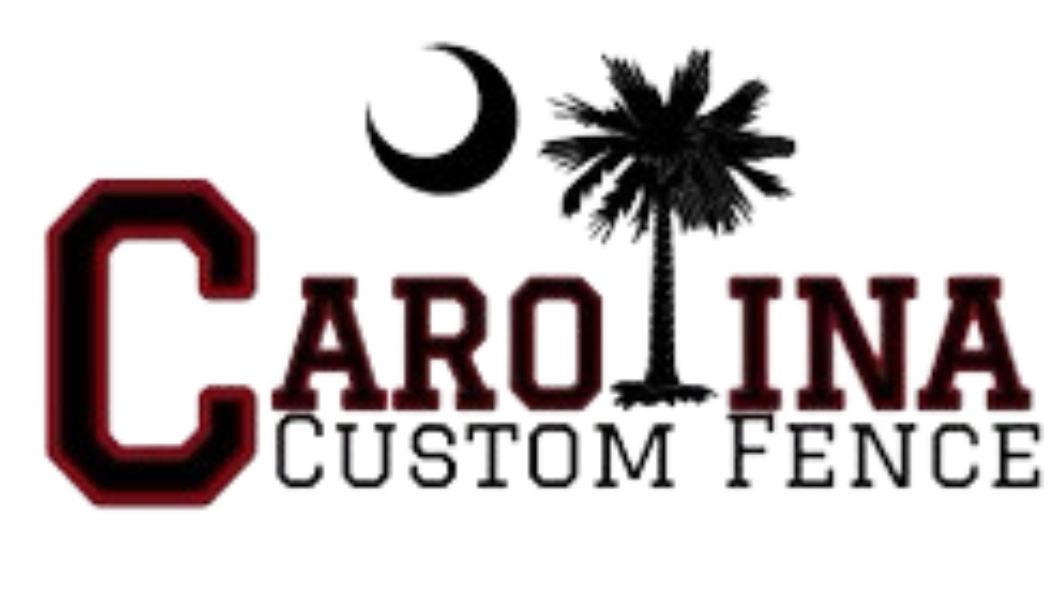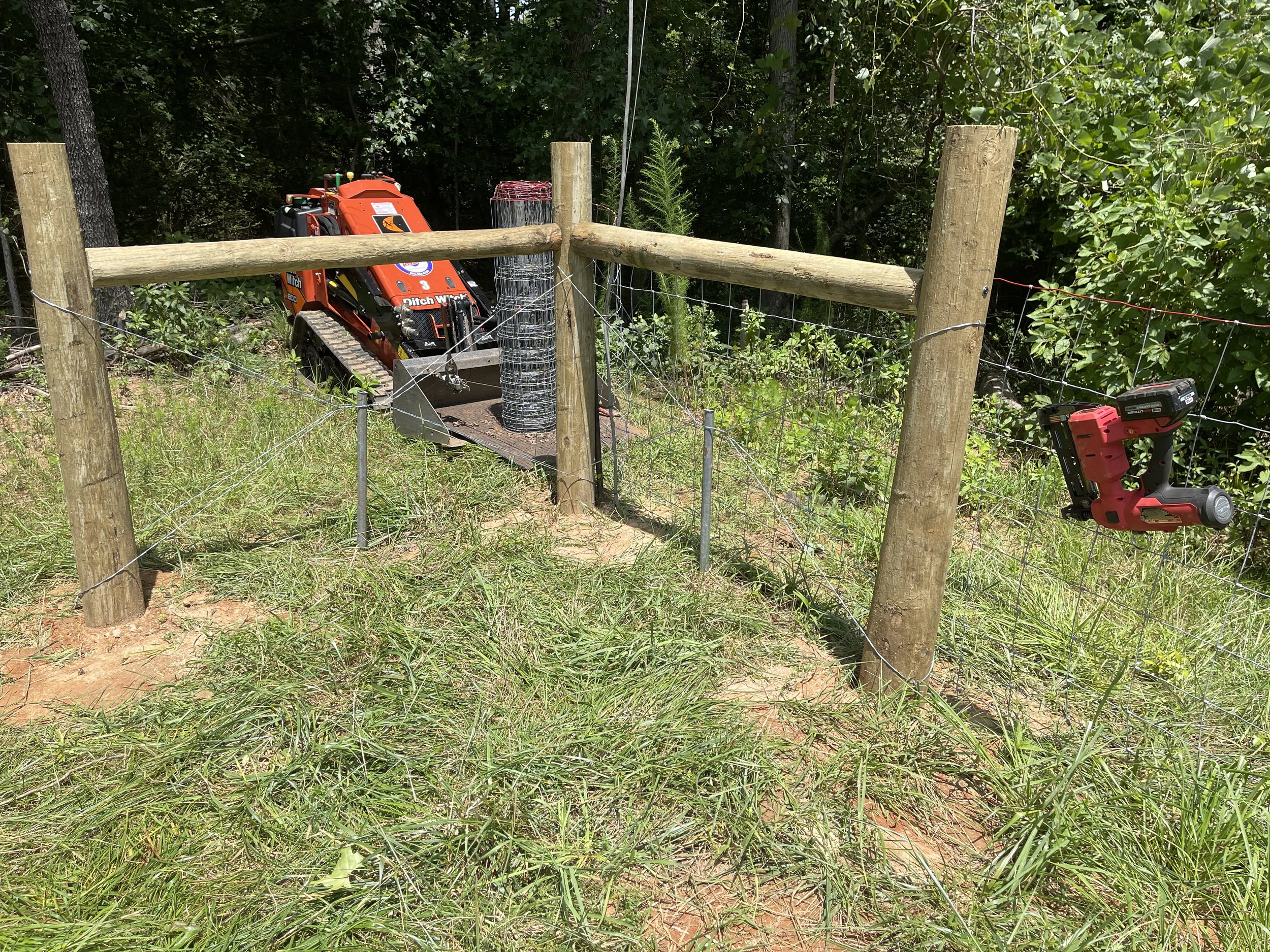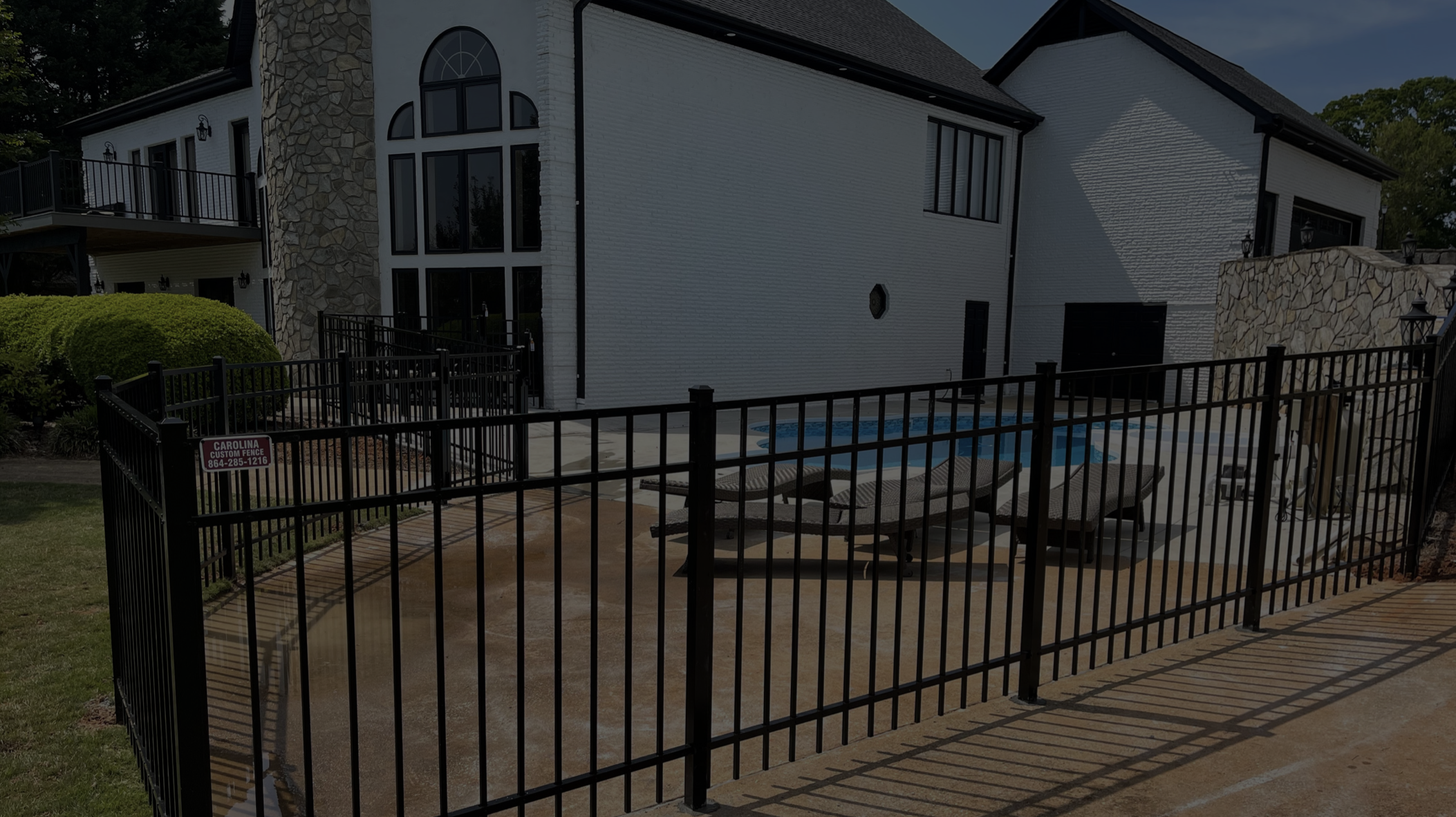
Post and Wire Fencing
Post and wire agricultural fencing is a common and practical fencing solution used in agriculture to enclose fields, pastures, and livestock areas. It consists of a series of wooden or metal posts set firmly into the ground at regular intervals, with wires stretched horizontally between them. This type of fencing serves various purposes, including containing livestock, protecting crops, and marking property boundaries.
High Tensile Wire Fence
This type of fencing uses high-strength wire (usually steel) stretched between wooden posts. It's a cost-effective option for containing livestock and can be electrified for added security.
Wire Mesh Fence
Wire mesh or woven wire is attached to wooden posts to create a fence that can contain smaller animals and protect gardens or crops from wildlife.
Post and wire agricultural fencing is a common and practical fencing solution used in agriculture to enclose fields, pastures, and livestock areas. It consists of a series of wooden or metal posts set firmly into the ground at regular intervals, with wires stretched horizontally between them. This type of fencing serves various purposes, including containing livestock, protecting crops, and marking property boundaries.
Here are the key components and features of post and wire agricultural fencing:
1. Posts: The primary structural elements of this type of fencing are the posts. These can be made of wood, metal, or even composite materials. Wooden posts are often used for their affordability and ease of installation, while metal posts offer greater durability and longevity. The posts are usually placed at regular intervals along the fence line, with the spacing determined by the specific needs of the farm or field.
2. Wire: Horizontal wires are tensioned between the posts to create a barrier. These wires are typically made of steel or other durable materials. The number of wire strands can vary, but it usually ranges from 2 to 5, depending on the intended purpose of the fence. Thicker and stronger wires are used for containing larger livestock, while thinner wires may be sufficient for marking boundaries or protecting crops from smaller animals.
3. Wire Tensioning: Proper tensioning of the wires is essential to maintain the structural integrity of the fence. This is achieved by using tensioning devices such as wire strainers or ratchets, which allow you to tighten the wires as needed.
4. Bracing: Corner and end posts are often reinforced with additional bracing to withstand the forces exerted on the fence. These bracing components typically consist of diagonal support wires or wooden braces that help prevent leaning or sagging.
5. Gates: To provide access to enclosed areas, gates are installed within the fence line. These gates can be simple wire gates or more robust wooden or metal gates, depending on the level of security required.
6. Electric Option: Some post and wire fences can be electrified to deter animals from attempting to breach the fence. Electric wires can be added in addition to the regular horizontal wires, and they are connected to an energizer to provide a mild electric shock when touched.
Post and wire agricultural fencing offers several advantages:
- Cost-Effective: It is often more cost-effective than some other fencing types like board or rail fencing.
- Versatile: It can be adapted to various livestock types and field conditions.
- Visibility: It provides good visibility for monitoring livestock and the surrounding area.
- Ease of Repairs: If a wire is damaged, it can be relatively easy to replace or repair.
CONTACT
Hello there! We're thrilled that you're interested in our free onsite consultation service. We kindly ask you to fill out the contact form below. Your consultation request is important to us, and we will reach out to you shortly.



